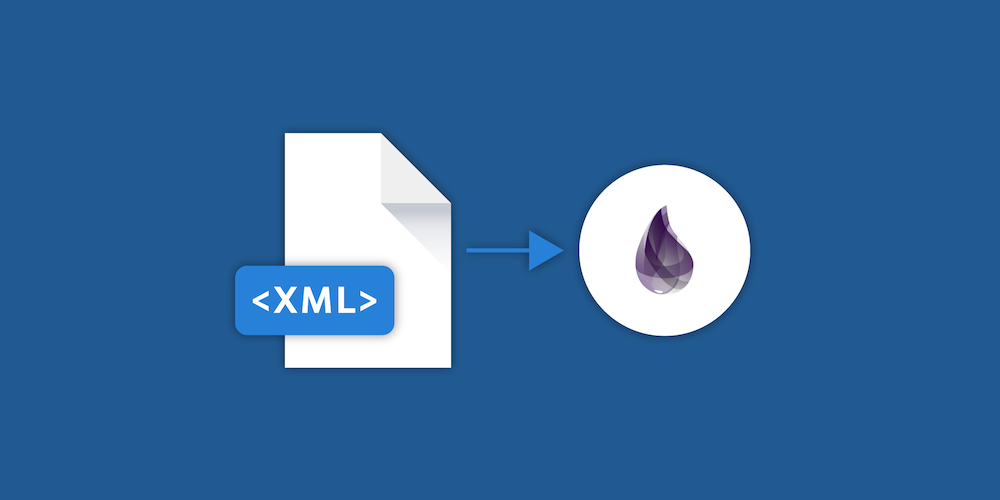How to Parse XML Documents in Elixir

As software engineers, we often have to deal with different document formats. One example of such a document format is XML. This blog post will be a short introduction on how to parse XML documents with Elixir, and it includes an example of how it’s done.
Example
First, we need to create the example. For this, run the following command to create a new Elixir project called xml_example, and navigate into the project’s directory:
mix new xml_example cd xml_example
We also need an example XML file to parse. We create an XML document in the root of our example directory with the following content and name it example.xml:
<todos> <todo id="1"> <body>This is the body of to-do item #1</body> <priority>3</priority> </todo> <todo id="2"> <body>This is the body of to-do item #2</body> <priority>1</priority> </todo> <todo id="3"> <body>This is the body of to-do item #3</body> <priority>3</priority> </todo> </todos>
This XML document consists of a root node, todos, which should model a to-do list. Each todo item has the item id as an attribute and the priority of that to-do as a subnode.
After creating this example document, we can start Elixir’s interactive shell so that we can play around with the example document:
iex -S mix
The first thing we have to do in order to parse the file is to open it:
{:ok, xmldoc} = File.read(Path.expand("./example.xml"))xmerl
xmerl is a library for parsing XML documents in Erlang, and since Elixir is built on top of Erlang, we can use it for our example. But because xmerl is an Erlang library, we need to take care of a few things, such as parsing the input to a charlist. To parse the XML document with xmerl, run the following expression in the interactive shell:
{doc, []} = xmldoc |> to_charlist() |> :xmerl_scan.string()ℹ️ Note: Don’t use the
:xmerl_scan.string/1function on untrusted input (e.g. data coming in an HTTP request), as it may cause atom table exhaustion, which will make your application crash. You can read more about this vulnerability in the EEF Security Working Group recommendations.
This will convert the content of the document we previously read to a charlist with to_charlist/1 and then parse it with :xmerl_scan.string/1. This function will return a tuple, where the first element is the parsed content represented in xmerl records (Erlang records defined in xmerl/include/xmerl.hrl). The second element will be a charlist of the rest of the input that could not be parsed. In our case, :xmerl_scan.string/1 should be able to parse the entire input; that’s why we match an empty list to the second element in the returned tuple. This is how the return value of this function will appear:
{{:xmlElement, :todos, :todos, [], {:xmlNamespace, [], []}, [], 1, [],
[
{:xmlText, [todos: 1], 1, [], '\n ', :text},
{:xmlElement, :todo, :todo, [], {:xmlNamespace, [], []}, [todos: 1], 2,
[{:xmlAttribute, :id, [], [], [], [todo: 2, todos: 1], 1, [], '1', false}],
[
{:xmlText, [todo: 2, todos: 1], 1, [], '\n ', :text},
{:xmlElement, :body, :body, [], {:xmlNamespace, [], []},
[todo: 2, todos: 1], 2, [],
[
{:xmlText, [body: 2, todo: 2, todos: 1], 1, [],
'This is the body of todo item #1', :text}
], [], '/Users/max/Documents/pspdfkit/xml_example', :undeclared},
{:xmlText, [todo: 2, todos: 1], 3, [], '\n ', :text},
{:xmlElement, :priority, :priority, [], {:xmlNamespace, [], []},
[todo: 2, todos: 1], 4, [],
[{:xmlText, [priority: 4, todo: 2, todos: 1], 1, [], '3', :text}], [],
'/Users/max/Documents/pspdfkit/xml_example', :undeclared},
{:xmlText, [todo: 2, todos: 1], 5, [], '\n ', :text}
], [], '/Users/max/Documents/pspdfkit/xml_example', :undeclared},
...Manually Parse xmerl Records
Because the returned data structure consists of Erlang records, which are defined in xmerl/include/xmerl.hrl, we have to convert them to Elixir records to be able to use them efficiently in Elixir. For this, we’ll use the defrecord macro, which we have to put into a module. We call this module XML, and we also define a few helper functions for parsing the XML file:
defmodule XML do import Record defrecord(:xmlElement, extract(:xmlElement, from_lib: "xmerl/include/xmerl.hrl")) defrecord(:xmlAttribute, extract(:xmlAttribute, from_lib: "xmerl/include/xmerl.hrl")) defrecord(:xmlText, extract(:xmlText, from_lib: "xmerl/include/xmerl.hrl")) def get_child_elements(element) do Enum.filter(XML.xmlElement(element, :content), fn child -> Record.is_record(child, :xmlElement) end) end def find_child(children, name) do Enum.find(children, fn child -> XML.xmlElement(child, :name) == name end) end def get_text(element) do Enum.find(XML.xmlElement(element, :content), fn child -> Record.is_record(child, :xmlText) end) |> XML.xmlText(:value) end end require XML
This enables us to get the data we want out of the XML document. For example, we can get a list of all to-do bodies, like this:
doc |> XML.get_child_elements() |> Enum.map(fn todo -> XML.get_child_elements(todo) |> XML.find_child(:body) |> XML.get_text() end) # Returns: ['This is the body of to-do item #1', 'This is the body of to-do item #2', 'This is the body of to-do item #3']
Although it is possible to get the data we want out of the document using the above, this looks like a lot of code. There must be a more convenient way to query data out of xmerl’s data structure.
XPath
XPath is a query language for selecting nodes in an XML document. xmerl supports querying an XML document with XPath. Using this query language, we can rewrite our code to query the text of all to-do bodies:
:xmerl_xpath.string('/todos/todo/body/text()', doc) |> Enum.map(&XML.xmlText(&1, :value))
We can also get rid of all the helper functions we defined in our XML module, as we won’t need them. This is because we can query the XML document with XPath instead of manually parsing the document.
Using XPath, we’re also able to choose nodes based on more complex queries, like selecting nodes based on attributes or on matching child nodes — for example, when we want to get the body text of all to-dos where the ID attribute is 1:
:xmerl_xpath.string('/todos/todo[@id=\"1\"]/body/text()', doc) |> Enum.map(&XML.xmlText(&1, :value)) # Returns ['This is the body of to-do item #1']
Another example of where we want to get the body text of all to-dos is where a child node “priority” with the value 3 exists:
:xmerl_xpath.string('/todos/todo[priority=\"3\"]/body/text()', doc) |> Enum.map(&XML.xmlText(&1, :value)) # Returns ['This is the body of to-do item #1', 'This is the body of to-do item #3']
SweetXML
Another option for parsing XML documents with Elixir is using the SweetXML library, which is a small wrapper around xmerl that reduces the boilerplate code we have to write for converting the input to a charlist or converting the xmerl records.
In order to use the SweetXML library, we have to quit our interactive shell session and add SweetXML to the dependencies list in mix.exs. Then we run mix deps.get in the project’s root directory to download the dependencies:
defp deps do [ {:sweet_xml, "~> 0.6.5"} ] end
After we have downloaded the dependencies, we can run iex -S mix to start another interactive shell session.
Now we can run the same queries, like in our previous example, but with even less code:
import SweetXml {:ok, xmldoc} = File.read(Path.expand("./example.xml")) # get body text of all to-dos where the ID attribute is `1` as a list: xmldoc |> xpath(~x"/todos/todo[@id=\"1\"]/body/text()"l) # Returns ['This is the body of todo item #1'] # get the body text of all to-dos where a child node "priority" with the value `3` exists as a list: xmldoc |> xpath(~x"/todos/todo[priority=\"3\"]/body/text()"l) # Returns ['This is the body of to-do item #1', 'This is the body of to-do item #3']
SweetXML defines a custom ~x Sigil, which also lets you define the return values in addition to the XPath query. The syntax for the custom Sigil looks like this, ~x"/some/xpath/query"l, where the last character (l in our example) represents the return value. l stands for list, but you can also choose other return values like i for integer, s for strings, and more. Take a look at the SweetXML documentation to see all available options.
Conclusion
Although xmerl can be used directly from Elixir, I recommend SweetXML for parsing XML documents, because it’s easier to use. The custom Sigil to define the return value is also a nice feature. All in all, it’s nice to have such a mature ecosystem provided by Erlang.
This post was updated in July 2020 to point out a vulnerability in xmerl.




